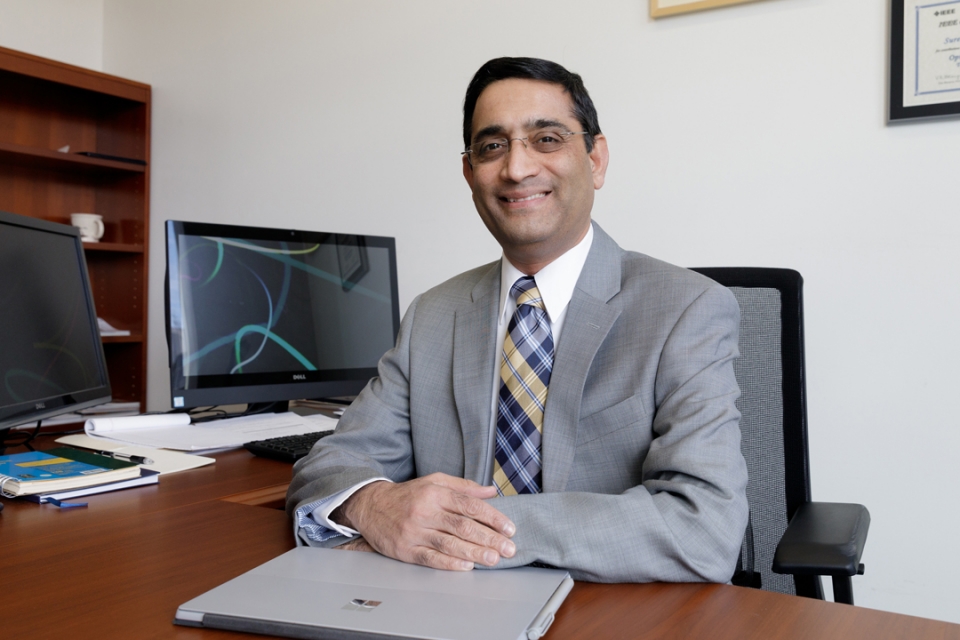One of the endeavors of Professor Subramaniam’s research group is to develop architectures for the next generation of data centers, which are scalable and highly energy-efficient.
Data centers are dedicated facilities used to power and house a large number of compute servers and storage systems. Large clusters of computers are connected together to process huge amounts of data, and this results in a high consumption of energy. As a result, a lot of heat is generated, and fans and chillers must be used to reduce the hazardous overheating of data centers.
In his collaboration with MIT Professor Eytan Modiano, Professor Subramaniam’s research focuses on replacing current data center communications with optical networks to increase the computer clusters’ speed and reduce their power consumption.
Optical communications relies on light to transmit information using laser signals. A transmitter first encodes a non-optical message into an optical signal, which is then received by a receiver that translates the message back to its original form.
This process is more efficient than electronic communications systems, such as wireless and wireline networks, which consume more power and take more time to process information. Additionally, wires within wireline networks can interfere with each other when they are spaced too close together, a complication optical networking prevents.
However, optical communications are still in their budding years, and despite tremendous progress in the past few decades the technology is still not as mature as electronic communications. Therefore, Professor Subramaniam’s research must judiciously architect the network using available features, and rely on intelligent algorithms to overcome the limitations.
Professor Subramaniam and his students, along with his collaborators, have developed an architecture and algorithms and have published their results in leading journals and conferences.
On a similar theme, in his collaboration with computer engineering professor Guru Venkataramani, Professor Subramaniam works with sophisticated computer architecture focused on reducing power consumption. Some of their work was published in the highly-reputable Transactions on Green Communications and Networks, a journal dedicated to green communications and networks.
Current data centers consume 2% of the nation’s energy supply, and the share is expected to grow further as the nation’s need for data processing and consumption continues to skyrocket. Any saving in energy can reduce the increasing carbon footprint. Professor Subramaniam believes in a future of optical communications, and his research group is looking for ways to apply their expertise in solving these real-world problems.


